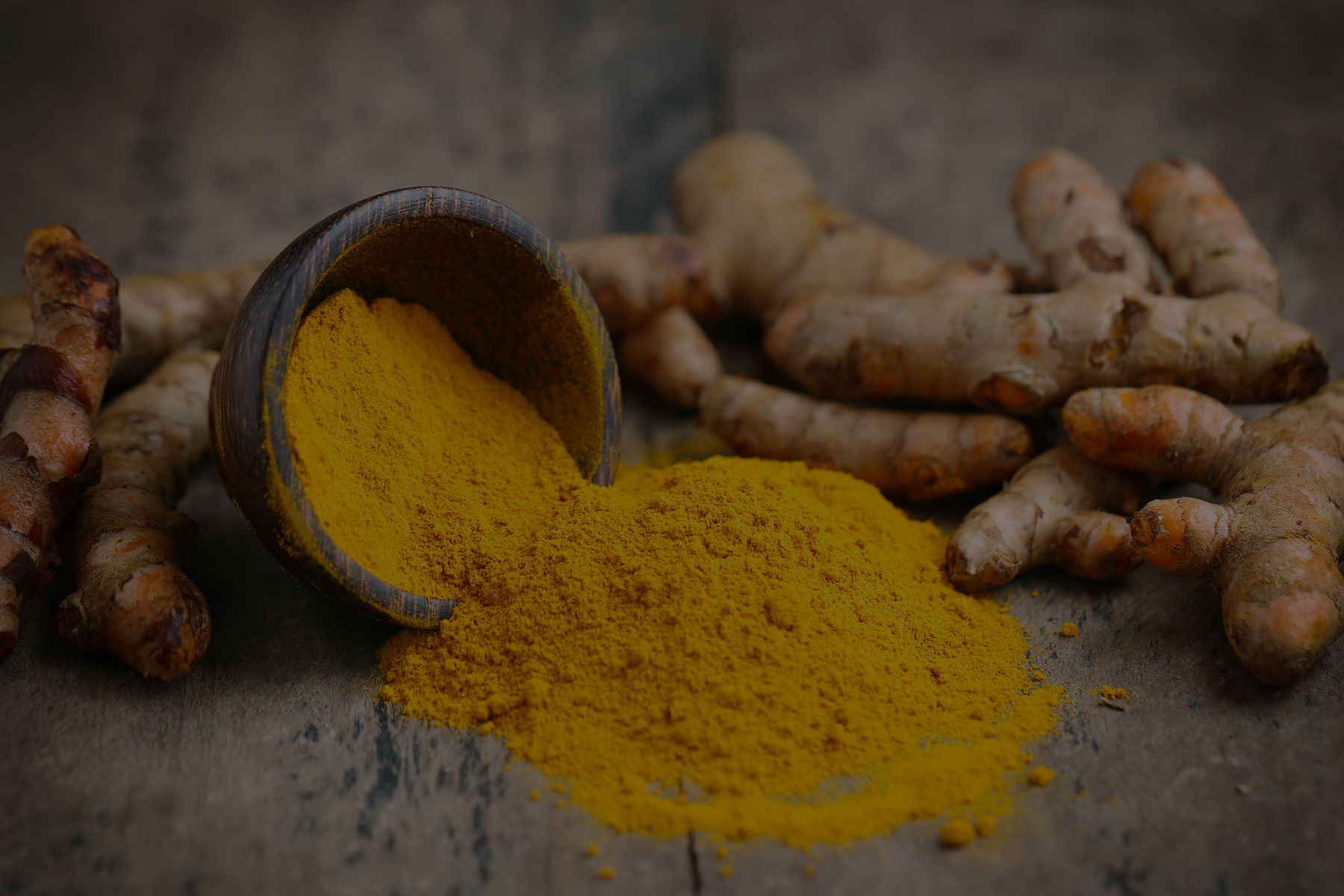Metabolites & free-curcumin
What are turmeric and curcumin?
While often considered synonymous, turmeric and curcumin are by definition different and are not interchangeable.
Turmeric is a spice from the rhizome of the curcuma plant, and is well known for the yellow color it gives, particularly in Indian cuisine. It is composed of a multitude of ingredients, but the main family of active compounds it contains are called “curcuminoids”. They include curcumin, demethoxycurcumin (DMC) and bisdemethoxycurcumin (BDMC). These curcuminoid parent forms constitute a very small fraction of the rhizome and represent between 2% and 9% of most turmeric culinary preparations. Notably, most commercially available turmeric standard extracts contain around 95% curcuminoids (of which 70 to 85% is curcumin).

Why are curcuminoids so poorly absorbed?
The chemical properties of curcuminoids, and their instability, both affect bioavailability negatively, posing considerable challenges for new formulation development.
Particular obstacles include:
Partial absorption by the small intestine, in part associated with curcuminoid biotransformation and efflux by intestinal cells.

How are curcumin and curcuminoids metabolized in the organism?
After ingestion, curcuminoids undergo rapid metabolism in both the intestine and the liver. Therefore, parent forms are subjected to physiological transformation which converts these hydrophobic curcuminoids into more hydrophilic metabolites. This is why curcuminoids in the systemic circulation can be observed in both their free and conjugated forms.
Curcuminoid metabolism can be divided into two main phases during which the parent forms go through several reactions of reduction and/or conjugation, such as glucuronidation and sulfation.
During phase I metabolism, curcumin is progressively reduced to dihydrocurcumin (DHC), tetrahydrocurcumin (THC), hexahydrocurcumin (HHC) and octahydrocurcumin (OHC). Demethoxycurcumin (DMC) and bisdemethoxycurcumin (BDMC) undergo the same steps.
Phase II metabolism leads to the production of glucuronide or sulfate forms of the parent curcuminoids or the reduced metabolites.
This extensive metabolic process generates multiple metabolites of curcumin, DMC and BDMC: curcumin glucuronide, DMC glucuronide, BDMC glucuronide, curcumin sulfate, DMC sulfate, BDMC sulfate, DHC, DHC glucuronide, DHC sulfate, THC, THC glucuronide, THC sulfate, HHC, HHC glucuronide, HHC sulfate, OHC OHC glucuronide, OHC sulfate, etc.

The importance of considering all curcuminoids
A disportionate focus on free-curcumin in scientific research over the past 20 years has led to a strong belief that it is the only curcuminoid responsible for turmeric bioactivity.
However, recent studies have shown that the putative effects of turmeric might be attributed to other parent curcuminoids (in addition to all transformed metabolites and degradation products) rather than to free-curcumin alone. As an example, several studies have shown that tetrahydrocurcumin, one of the main reduced metabolites of curcumin, is associated with higher anti oxidant properties than free-curcumin.
Despite evidence of bio-efficacy of other (parent) curcuminoids found in the root, demethoxycurcumin (DMC) and bisdemethoxycurcumin (BDMC), as well as other curcuminoid metabolites and degradation products such as ferulic acid and vanillin, it is still not clear if one of these curcuminoids has more active potential than the others.
Moreover (as shown for different polyphenols) it has been demonstrated that curcumin glucuronide conjugate can be catalyzed in bones, therefore becoming available in its free-curcumin form again. Such a reaction could take place in different cells and tissues for all glucuronide or sulfate-conjugated curcuminoid metabolites, supporting the case that the absorption of each individual curcuminoid is necessary to benefit from turmeric activity.
How is our study distinctive?
As explained above, all curcuminoid metabolites should be taken into consideration when observing the bioactivity and benefits of turmeric. Consequently, identifying the most exhaustive curcuminoid quantification profile possible is crucial to comprehensively define curcuminoid absorption, and to understand the bioavailability of a turmeric formulation.

At Naturex, part of Givaudan, we conducted the first study to separately quantify the three major turmeric parent curcuminoids and their phase I and II metabolites in human plasma, supporting pharmacokinetic modeling and clarifying routes of metabolism (Link to the PK2 trial). Our clinical trial was the first to investigate 15 metabolites individually at the same time, enabling the most exhaustive curcuminoid quantification possible.




